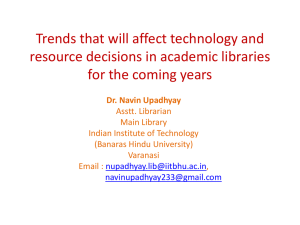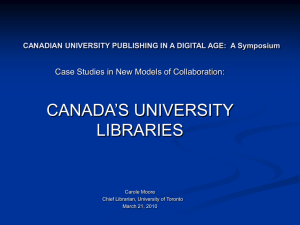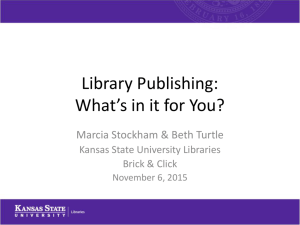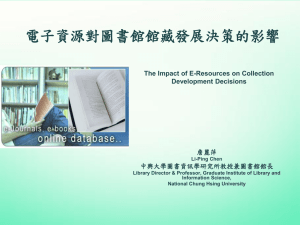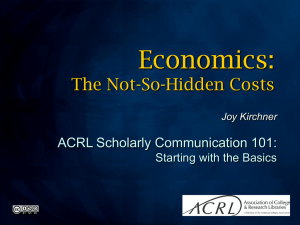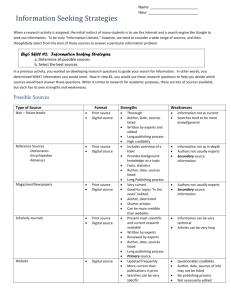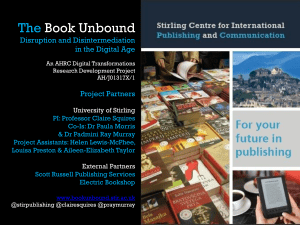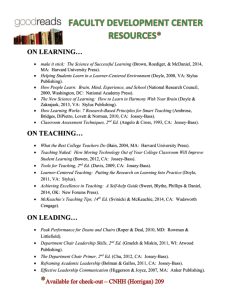InfoSci Overview
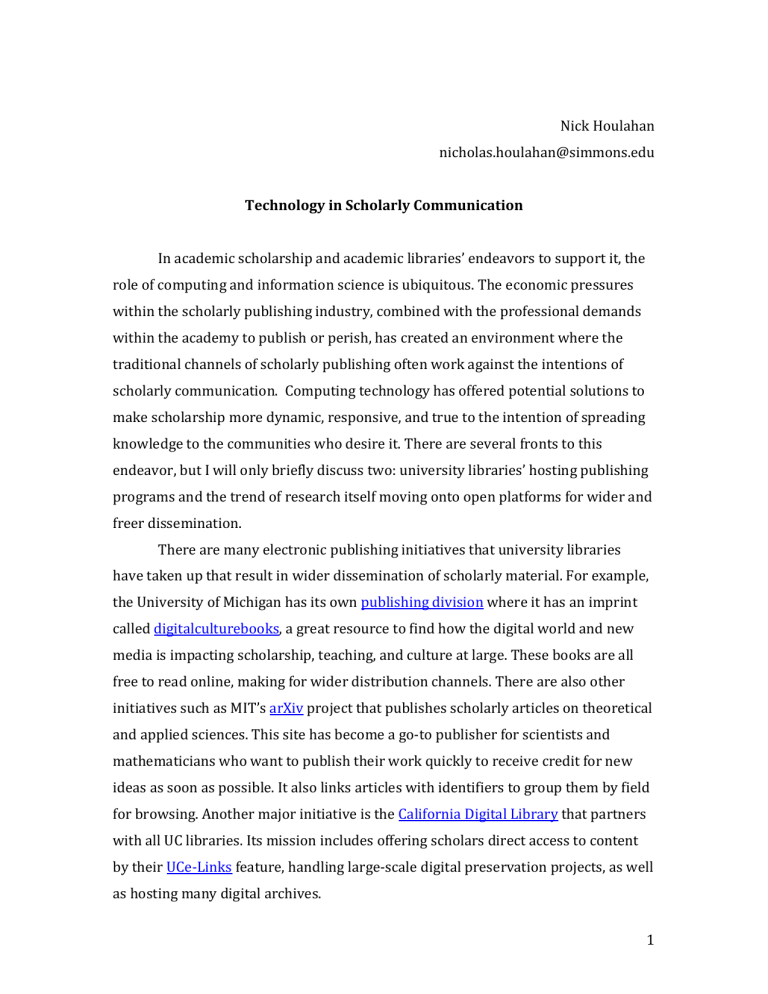
Nick Houlahan nicholas.houlahan@simmons.edu
Technology in Scholarly Communication
In academic scholarship and academic libraries’ endeavors to support it, the role of computing and information science is ubiquitous. The economic pressures within the scholarly publishing industry, combined with the professional demands within the academy to publish or perish, has created an environment where the traditional channels of scholarly publishing often work against the intentions of scholarly communication. Computing technology has offered potential solutions to make scholarship more dynamic, responsive, and true to the intention of spreading knowledge to the communities who desire it. There are several fronts to this endeavor, but I will only briefly discuss two: university libraries’ hosting publishing programs and the trend of research itself moving onto open platforms for wider and freer dissemination.
There are many electronic publishing initiatives that university libraries have taken up that result in wider dissemination of scholarly material. For example, the University of Michigan has its own publishing division where it has an imprint called digitalculturebooks , a great resource to find how the digital world and new media is impacting scholarship, teaching, and culture at large. These books are all free to read online, making for wider distribution channels. There are also other initiatives such as MIT’s arXiv project that publishes scholarly articles on theoretical and applied sciences. This site has become a go-to publisher for scientists and mathematicians who want to publish their work quickly to receive credit for new ideas as soon as possible. It also links articles with identifiers to group them by field for browsing. Another major initiative is the California Digital Library that partners with all UC libraries. Its mission includes offering scholars direct access to content by their UCe-Links feature, handling large-scale digital preservation projects, as well as hosting many digital archives.
1
These are just a fraction of the projects that are happening in the university publishing industry where libraries are taking up computing solutions to create and/or disseminate materials for their communities. To find out about these sources, I follow the journal Against the Grain , whose volume 20, issue 6, had a whole issue dedicated to these sorts of developments and the Journal of Electronic
Publishing . In addition, the organization SPARC (Scholarly Publishing and Academic
Resources Coalition), which is a leading consultant for libraries interested in participating in these sorts of projects, hosts useful material on their website .
Furthermore, a report issued by Ithaka S+R and published in 2007, offers an important assessment of how university publishers need to adopt more technological solutions to keep up with the use of computing in scholarly communications.
New and interesting developments are also happening with the use of computing to aid the production and sharing of research itself among academic communities. One interesting project outlined by Kathleen Fitzpatrick in her book
Planned Obsolescence: Publishing, Technology, and the Future of the Academy is the use of a blog-based publishing engine called CommentPress that allow authors to receive comments on their work during the production process itself. There are problems of organizing this commenting feature in a way that keeps the work coherent and there are open questions about the authority of the text. However, it is an interesting solution to the problems that are tied to traditional peer review, where only two or three readers offer pre-publication feedback during a lengthy process, while the rest comes after publication in the form of reviews. Fitzpatrick directs Media Commons that offers material on new publishing platforms, which is a good place to discover more about this kind of work. The Institute for the Future of the Book is another organization that is exploring how traditional publishing is taking advantage of technology to disseminate material that would have been impossible before computing.
These kinds of projects, both publishing initiatives at university libraries and initiatives to harness the ways scholarly communication is moving to networked platforms, are two exciting ways that scholarly publishing and research are
2
changing and modernizing in today’s and tomorrow’s digital world. They open new ways of thinking about what it means to even publish a work, if that work is constantly evolving and never quite finished. There are also practical questions too about how to preserve and organize these alternative modes of scholarly production for better retrieval and linking. Linked data and the semantic web are offered in the literature as a solution to bring like projects together into a searchable network. But this may require too much buy-in from stakeholders without foreseeable rewards.
What certainly is true is that computing and information science is not just a supplement that helps the academy do research; it changes the possibilities of research itself by changing the ways that scholars engage with each other and the very works they produce. Libraries will certainly have challenges ahead in figuring out a way to collect, preserve, and make discoverable this material for future patrons.
3
